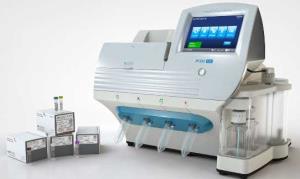Progressive companies producing red meat and poultry have implemented COVID-19 testing programs for workers. On-site detection of COVID-19 virus is expensive and due to low sensitivity is subject to an estimated 20 percent false negative rate.
|
In an opinion article in the June 8th edition of The Wall Street Journal, Dr. Scott Gottlieb, previously Commissioner of the Food and Drug Administration from 2017 to 2019, and colleague Dr. Lauren Silvis, Senior Vice President at Tempus Labs Inc, noted the practicality and sensitivity of next-generation sequencing. This technique allows pooled samples from as many as 100 workers to be rapidly screened. According to Drs. Gottlieb and Silvis, the technique was used in Wuhan to test 10 million citizens in 19 days during May.
If a positive result is obtained on a pooled sample, individuals comprising the specific pool can be re-tested individually to determine who might be infected to implement quarantine.
|

Dr. Scott Gottlieb |

Next Generation Sequencing installation |
The challenge facing plant management is to exclude infection by identifying both symptomatic and asymptomatic individuals. This requires rapid testing. The second component involves suppression of transmission within a plant. Currently this is based on wearing PPE, social distancing, thorough decontamination at the end of the working day, and installation of dry hydrogen peroxide generators in change rooms and break rooms where workers congregate.
|
The cost of employing workers is rising rapidly as a result of COVID. In addition to increased wage rates and bonuses, providing PPE and testing workers is adding to the cost of plant operation. The capital investment to replace workers with mechanization and robotics can now be amortized over a shorter period given the higher cost of manual and repetitive labor.
Obvious opportunities in egg packing include robotic case packers and pallet stackers that offer convenience at a progressively lower cost.